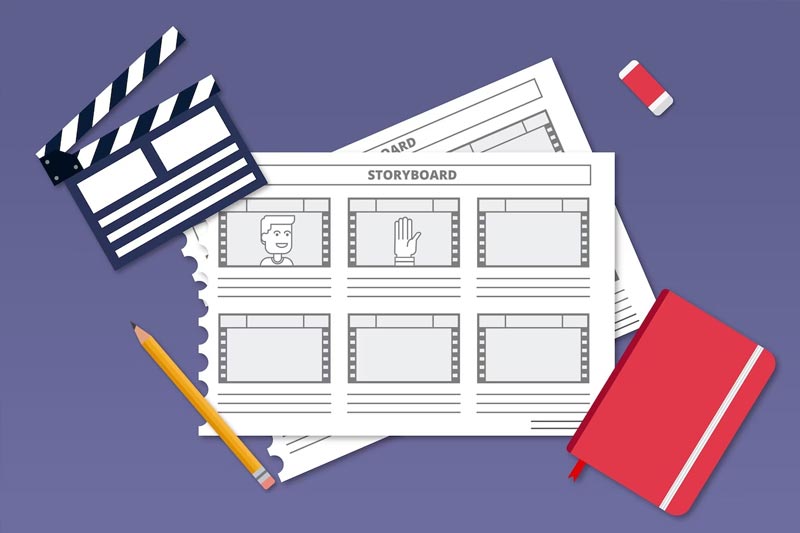
How to Create a Project Storyboard for Effective Video Production in Hartford, CT
As a video production company in Hartford, CT, we know how important it is to have a well-planned video project. A project storyboard is an essential tool in the video production process, providing a visual representation of the shots and sequence of events used. In this blog post, we’ll look at how to create a project storyboard for effective video production in Hartford, CT.
Understand Your Video Goals
Before beginning any video project, it’s crucial to have a clear understanding of your video goals. This means identifying your target audience, the message you want to convey, and the emotions you want to evoke. A well-defined goal helps ensure that your video project is effective and successful.
Identify Your Target Audience
Understanding your target audience is essential for creating a video that resonates with them. Consider who you want to reach with your video and what they care about. This could include factors such as demographics, interests, and behaviors. By understanding your audience, you can tailor your message to meet their needs and create a video that is engaging and relevant.
Determine Your Message
Your video’s message is the main idea you want to communicate to your audience. It should be clear, concise, and compelling. Think about what you want your audience to take away from your video and how you can communicate that message effectively. Consider the tone you want to set and the emotions you want to evoke.
Evoke Emotions
Emotions are a powerful tool for video production in Hartford, CT, that engages your audience and makes your message memorable. Consider the emotions you want your audience to feel when watching your video. Do you want to make them laugh, cry, or feel inspired? By understanding the emotional response you want to evoke, you can create a video that resonates with your audience and leaves a lasting impression.
Brainstorm Ideas

Once you clearly understand your video goals, it’s time to brainstorm ideas for your project. This is the stage where you can let your creativity run wild and develop innovative ideas to set your video apart from the competition.
One effective brainstorming technique is to create a mood board. This is a collection of images, colors, and other visual elements that capture the mood and tone of your video. This can help you visualize the look and feel of your video project and identify any themes or motifs you want to incorporate. Another technique is creating a mind map, a diagram visually organizes information and ideas. This can help you organize your thoughts and identify connections between different ideas.
Sketch Your Storyboard
With your ideas in mind, it’s time to sketch your storyboard. This is where you’ll create a visual representation of your video project, outlining the sequence of events and shots used. By creating a storyboard, you can better understand how your video production in Hartford, CT, will flow and identify any areas that need improvement.
There are many ways to create a storyboard, but focusing on clarity and organization is the most important thing. Use a template or simply draw your ideas on paper, including shots, dialogue, and any other details you want to include in your video project. As you create your storyboard, remember the message you want to convey and your target audience. It’s also important to consider the pacing of your video and how each shot will flow into the next.
Revise Your Storyboard
Once you have a rough draft of your storyboard, it’s essential to review and revise it. This is where you’ll ensure that your shots and dialogue align with your video goals and that your storyboard tells a cohesive story. During the revision process, consider if there are any areas where you can simplify or clarify your message. Look for any plot holes or inconsistencies in your storyboard, and ensure that your video’s pacing is appropriate.
Finalize Your Storyboard
With your revisions complete, it’s time to finalize your storyboard. This means adding any necessary details and ensuring your shots and dialogue are clear and concise. During the finalization process, consider if any additional elements could enhance your videos, such as music, sound effects, or animations.
Once your storyboard is finalized, you can use it as a roadmap for your video production in Hartford, CT. This will help ensure your video project stays on track and meets your goals. Overall, finalizing your storyboard is a crucial step in the video production process, and taking the time to do it right can make all the difference in the success of your video project.
We’ll Help You With Your Video Production in Hartford, CT

Creating a project storyboard is critical to successful video production in Hartford, CT. You can ensure a well-planned and executed video project by understanding your video goals, brainstorming ideas, sketching your storyboard, and revising and finalizing it.
At Video Production Services, we have the expertise and experience to help you create a project storyboard that aligns with your video goals and resonates with your target audience. As a local video production company in Hartford, CT, we understand the community’s unique needs and are committed to delivering high-quality video projects that meet your expectations.
Contact us today to learn how we can help you with your next video project. We are dedicated to providing exceptional video production services in Hartford, CT, and we can’t wait to help you bring your vision to life.
